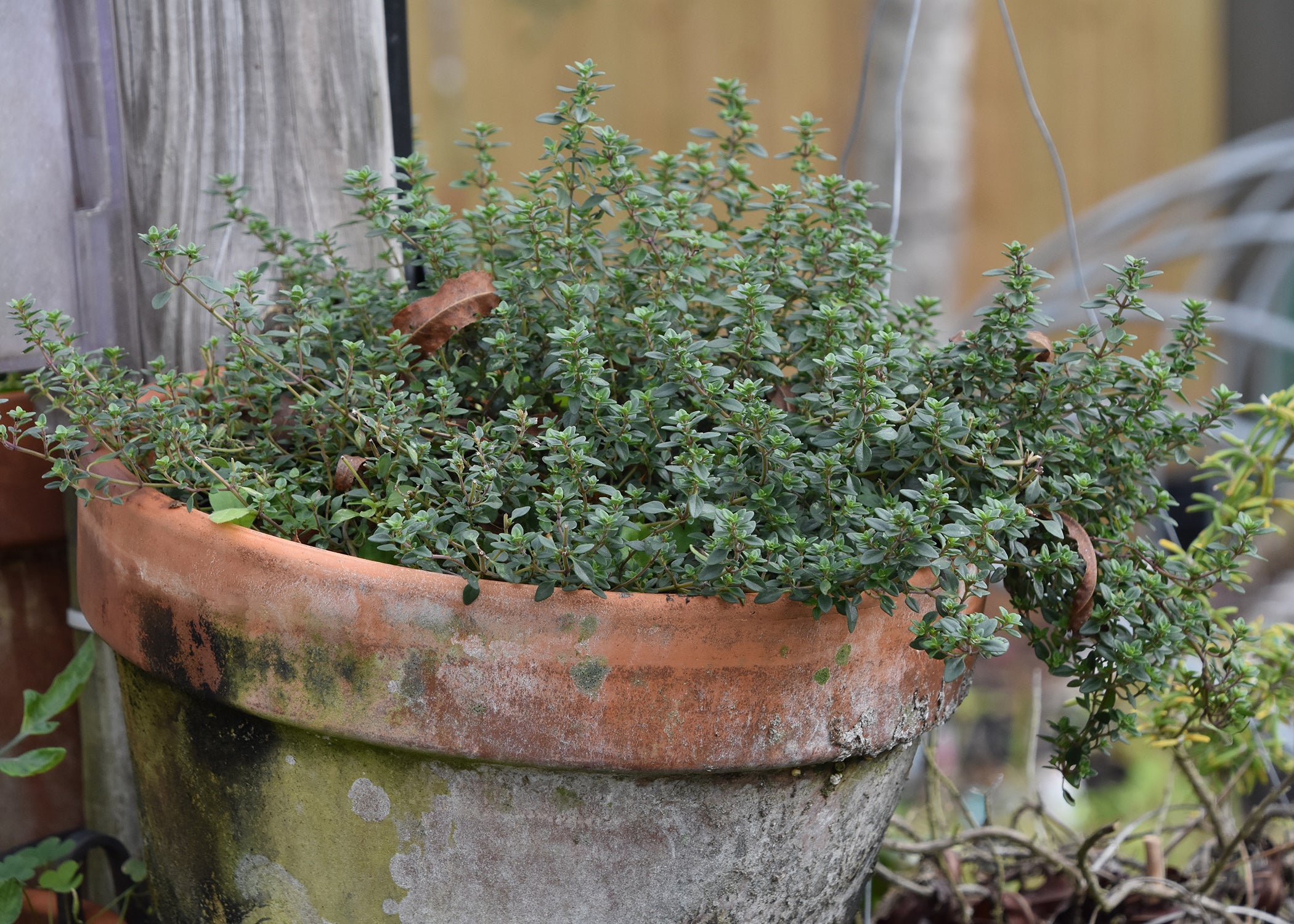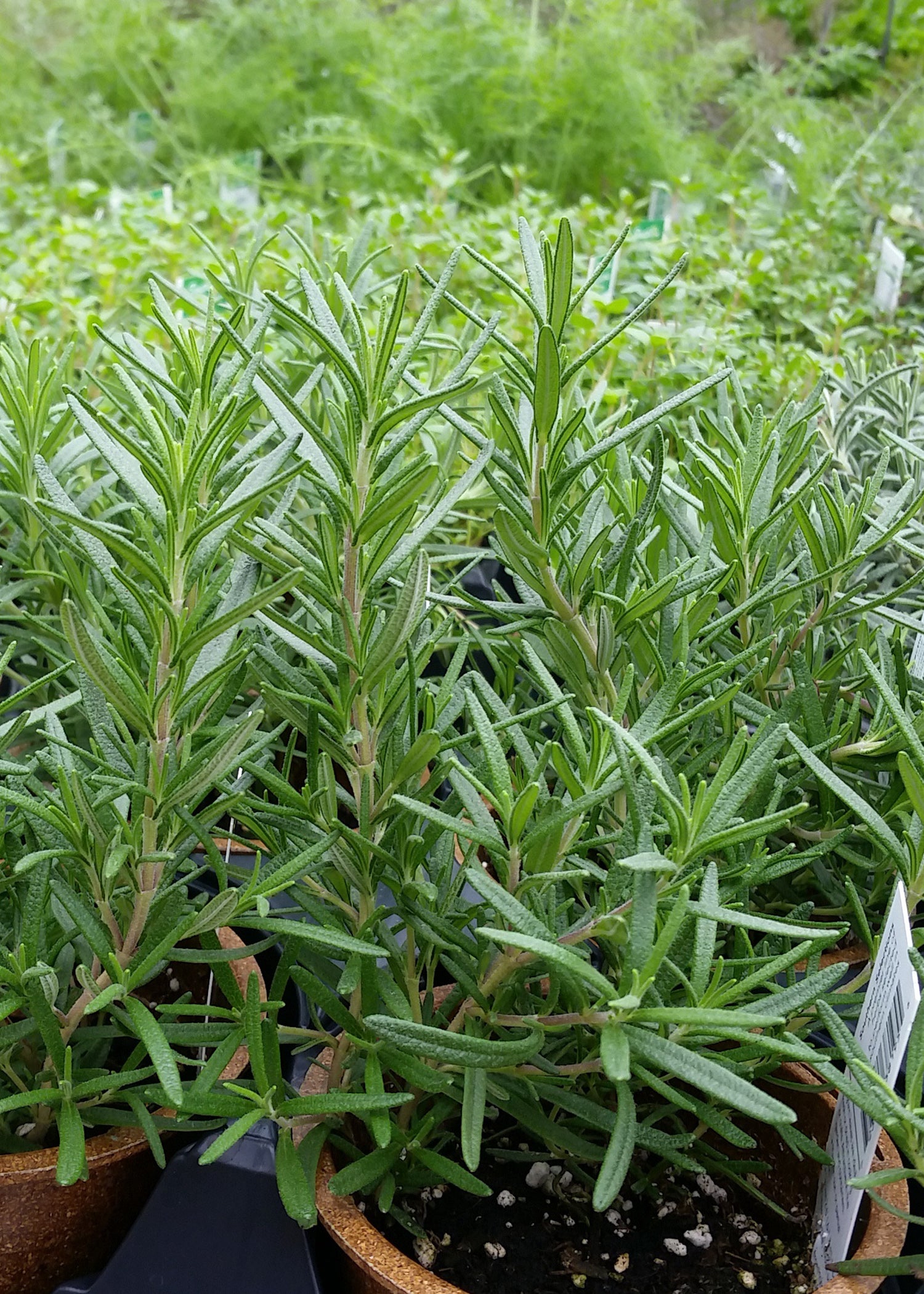Try rosemary and thyme in home gardens, containers
Published 8:42 am Monday, April 26, 2021

- THYME – Thyme is a savory herb when added to dishes, and it grows low and spreading in the garden. (Photo by MSU Extension/Gary Bachman) Alt text -- A low-growing plant with tiny leaves grows in a large pot. ###

ROSEMARY – The herb rosemary thrives best on neglect, and it is a useful herb for use in the kitchen.
By Gary R. Bachman
MSU Extension Service
When looking at all the plants growing in landscapes, I’m reminded that each plant has a role in the story of that garden. And most garden stories have plants with sidekicks that you always find side by side.
A garden story that I recently enjoyed was the British TV show, “Rosemary & Thyme.” Rosemary Boxer (a university lecturer) and Laura Thyme (a former police officer) were a dynamic duo in the garden. They solved mysteries — mostly murders — while working as gardeners in beautiful landscapes all across Europe.
And like the TV characters, the plants rosemary and thyme make a great duo in my home herb garden.
Rosemary has needle-like leaves that typically are a dark green with silvery undersides. The leaves are very aromatic. When used in a freshly prepared dinner, that sweet aroma warms the entire kitchen. Try adding fresh rosemary to hearty chicken and lamb recipes.
Rosemary can be finicky to grow in the garden, especially when given too much attention, such as watering and fertilizing. I’ve found that rosemary is one of those garden plants that thrives on neglect. This means I try not to even look at it as I walk by, but I can’t help touching the plants and releasing their sweet scent.
Typically, rosemary has a more upright, spreading growth habit. I love the selection Prostrata, which is perfect for growing in hanging baskets. Rosemary was named a Mississippi Medallion winner in 2016.
Thyme is a great culinary herb that smells like summer to me.
Thyme has a low and spreading growth habit. The small, fragrant leaves are produced on thin, woody stems. There is a wide selection of aromas and flavors available, like lemon or variegated thyme, but my go-to favorite is the common green variety, English thyme.
It’s amazing how the pollinators are attracted to the pinkish flowers when thyme begins to bloom. Be sure to encourage the plants to produce more growth by pruning the plants back by a third after flowering.
Thyme adds a savory flavor note to many dishes. For example, I love fresh thyme with my morning eggs. Use thyme to enhance pork, beef and fish dishes. It’s also delicious to add to roasted root vegetables like turnips, rutabagas, and carrots.
Both rosemary and thyme thrive in similar growing conditions, beginning with full sun.
They can be grown with the best success, in my opinion, in raised beds; even better, in containers. This ensures the proper drainage these plants need. Growing in droughty conditions — the drier the better — concentrates the aromatic essential oils.
Both rosemary and thyme can be grown from seed, but that requires real patience. For these herbs, I always suggest buying transplants from your favorite independent garden center or nursery.
Then you can create your own rosemary and thyme combinations.



